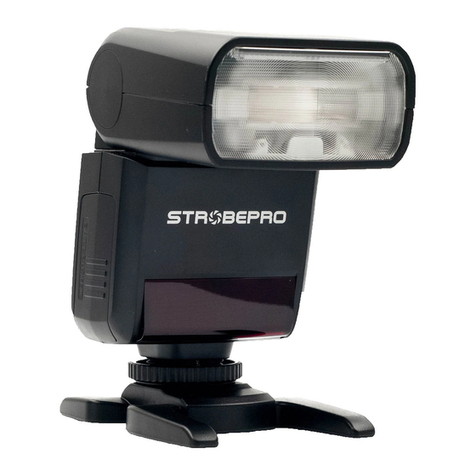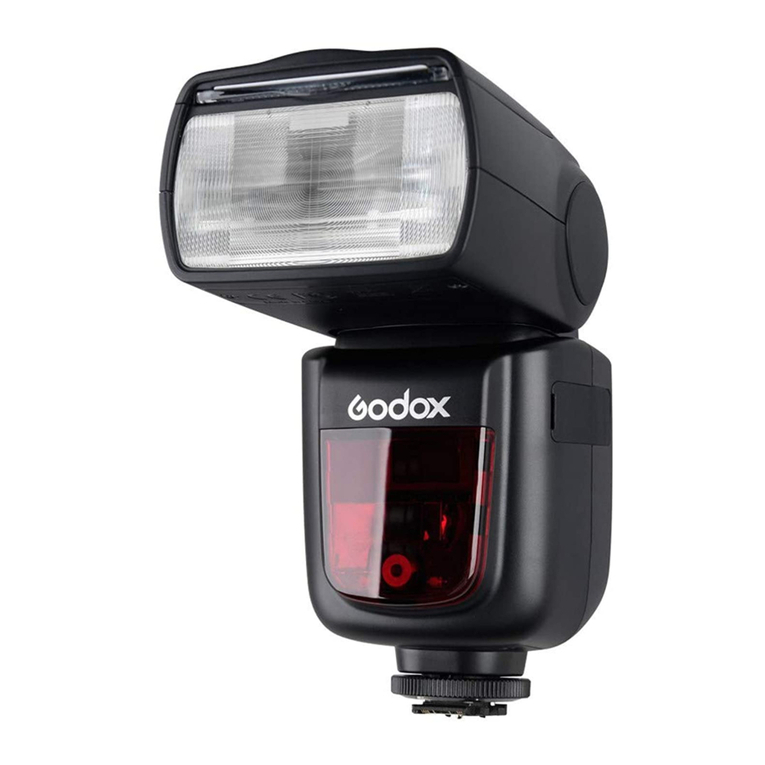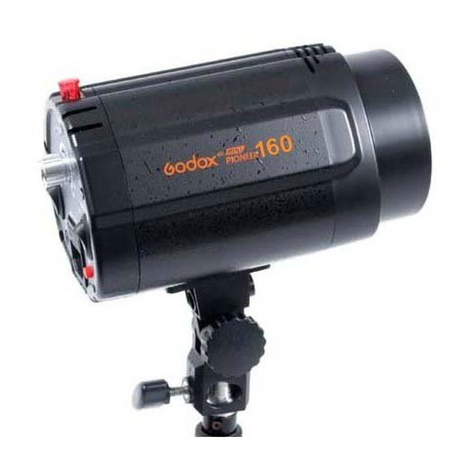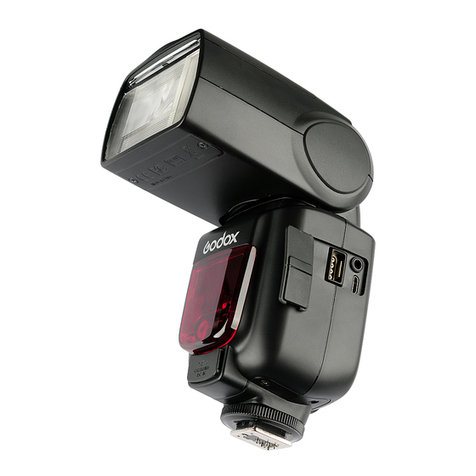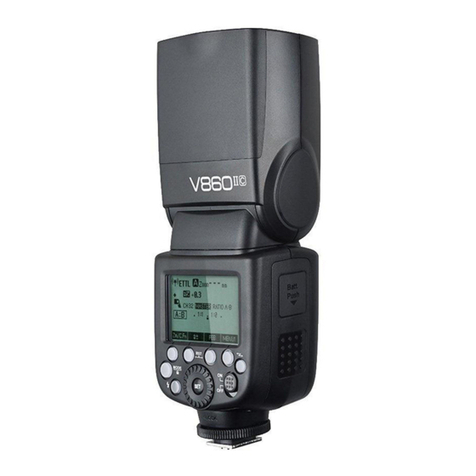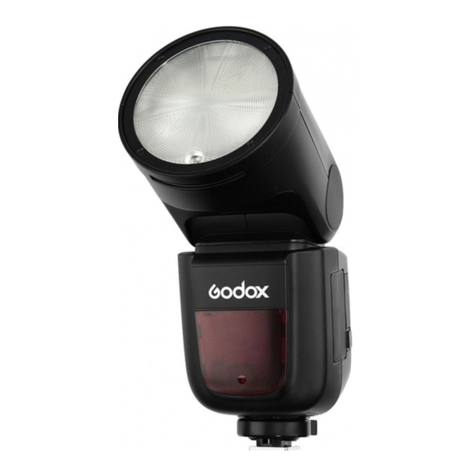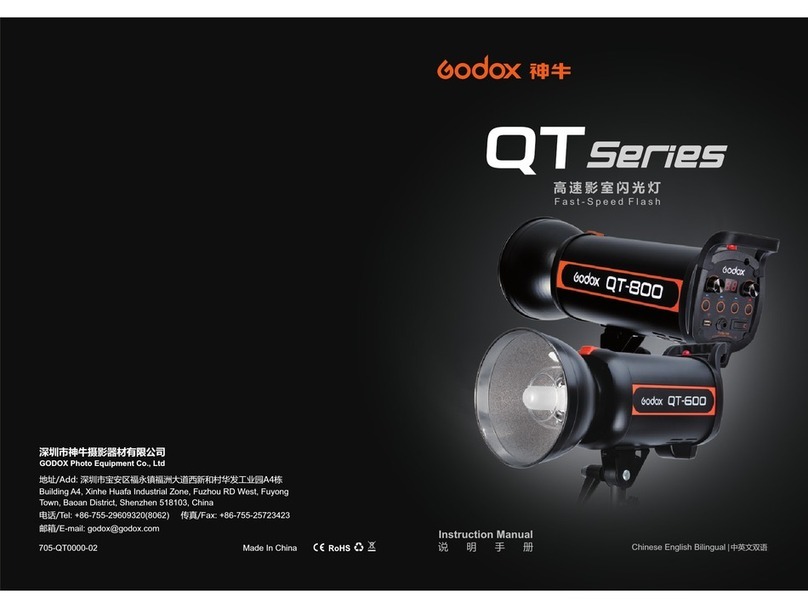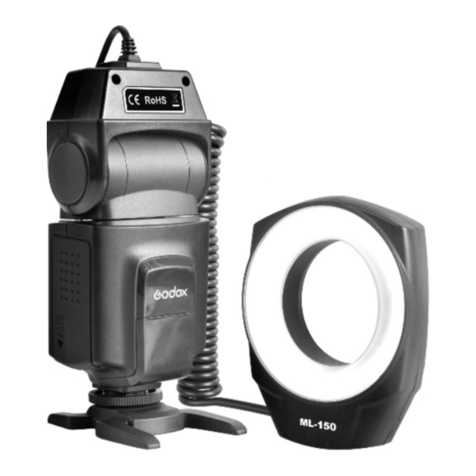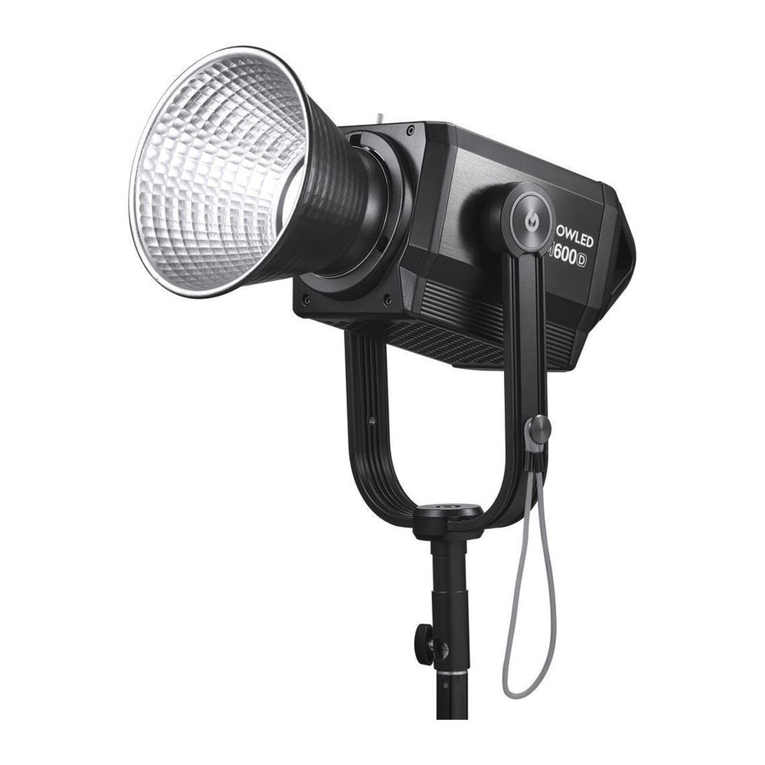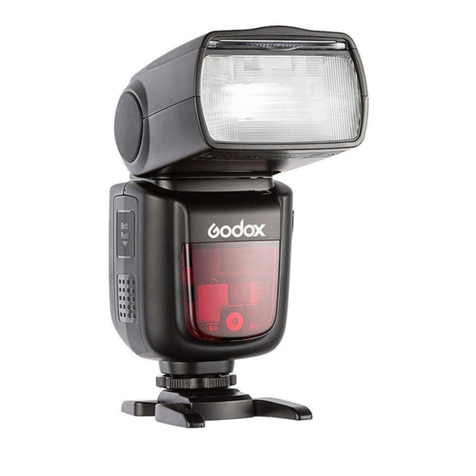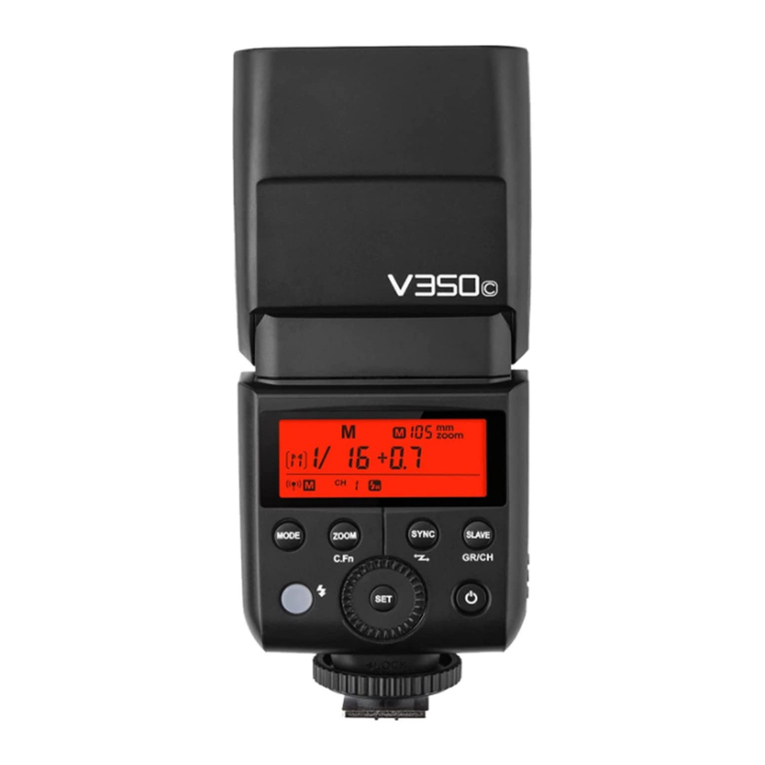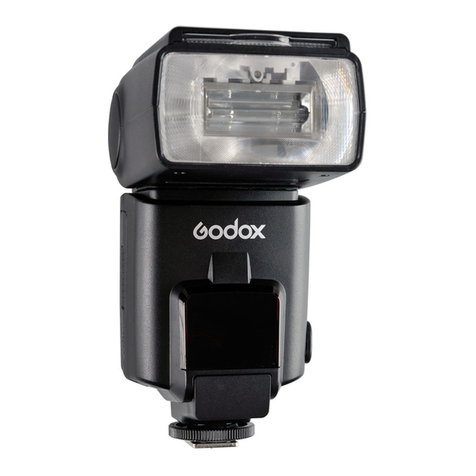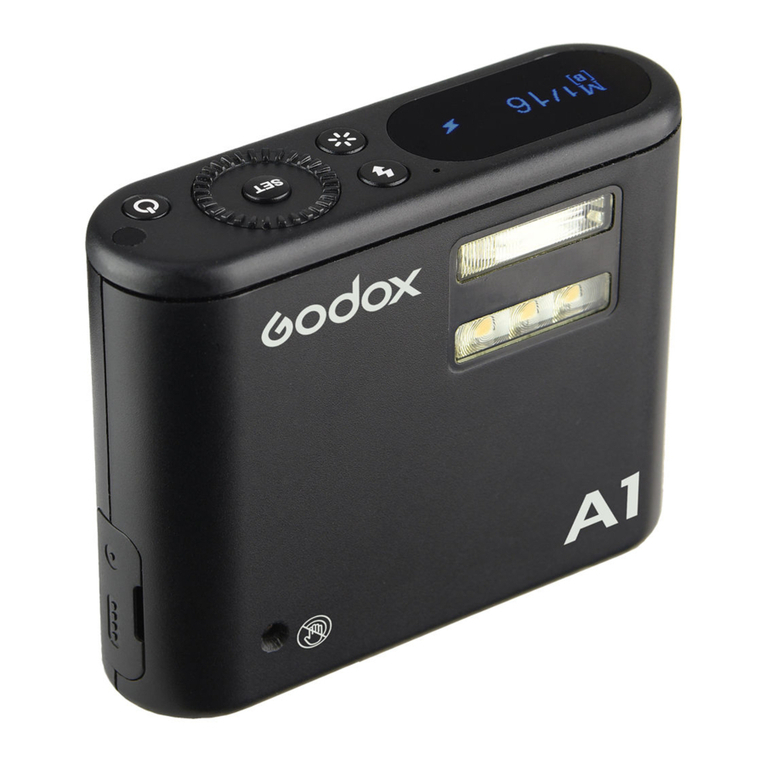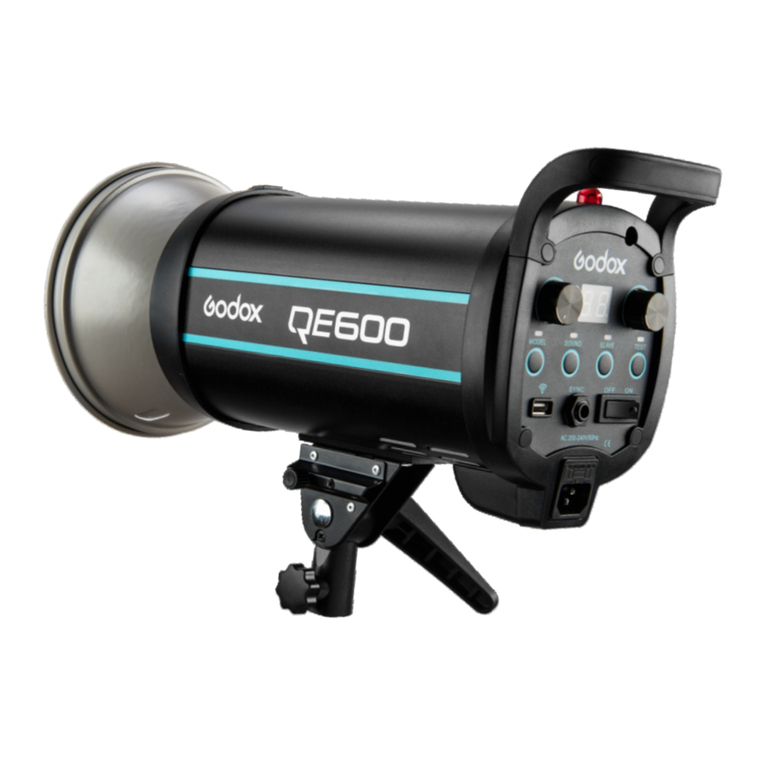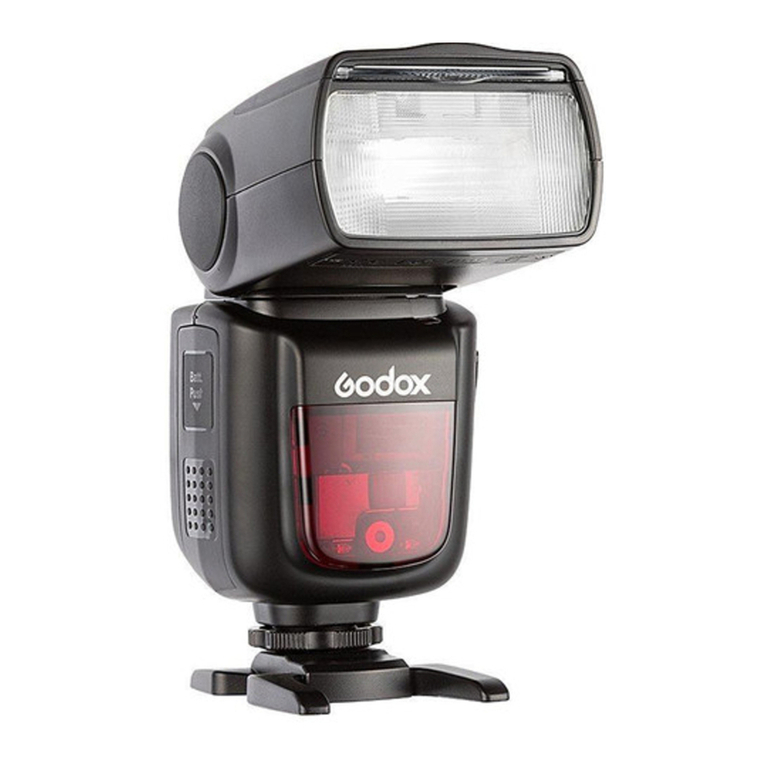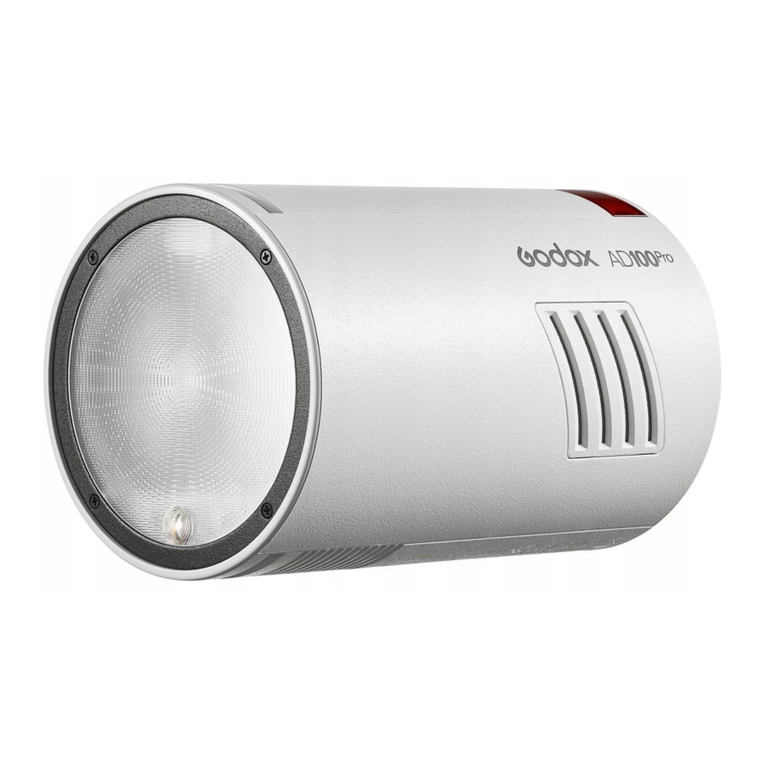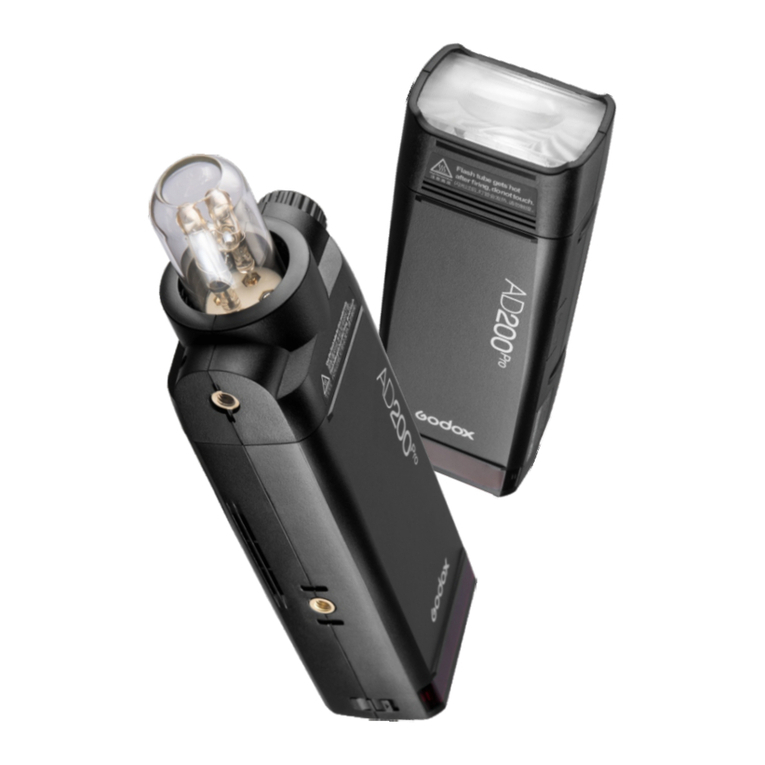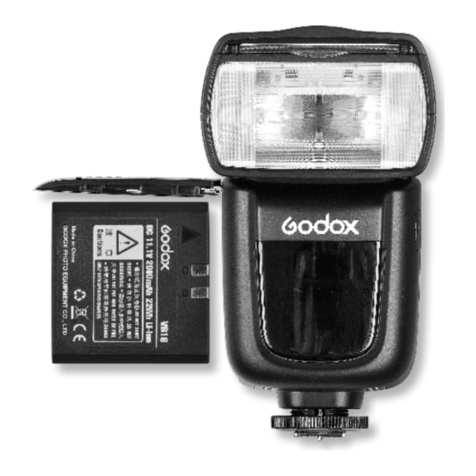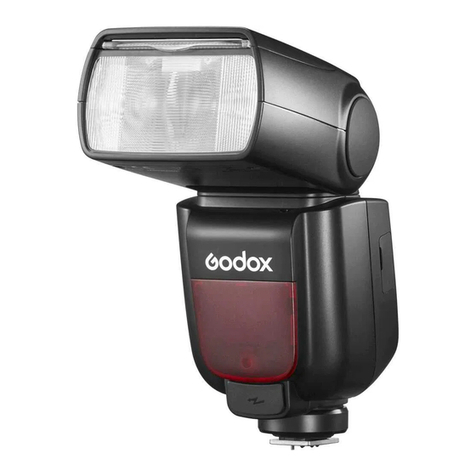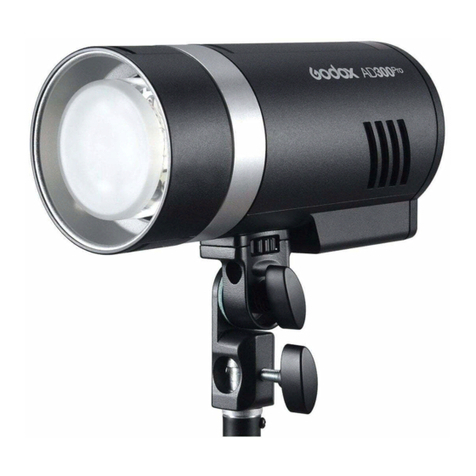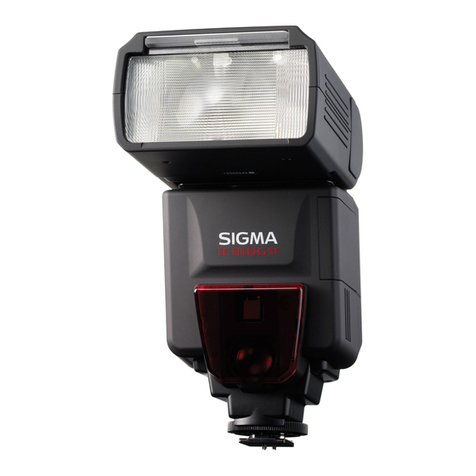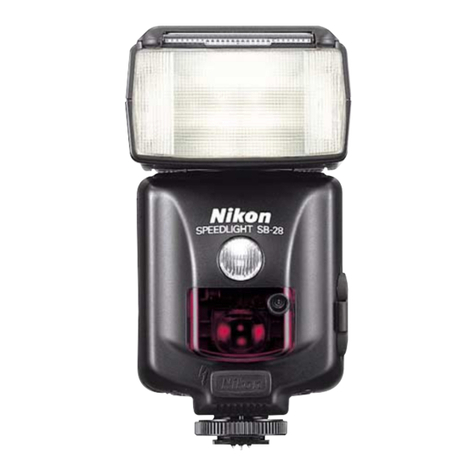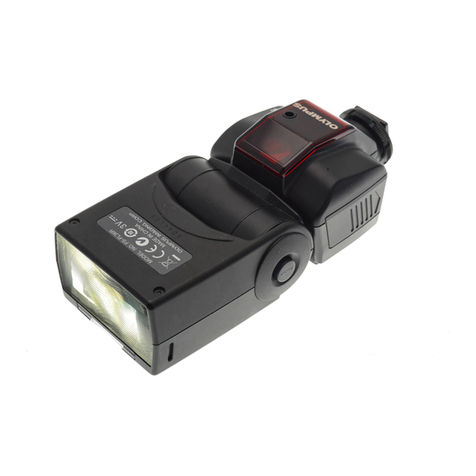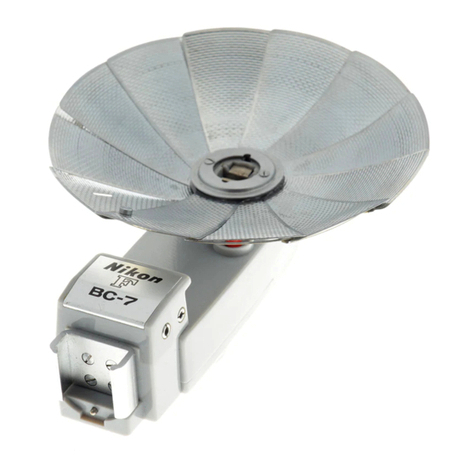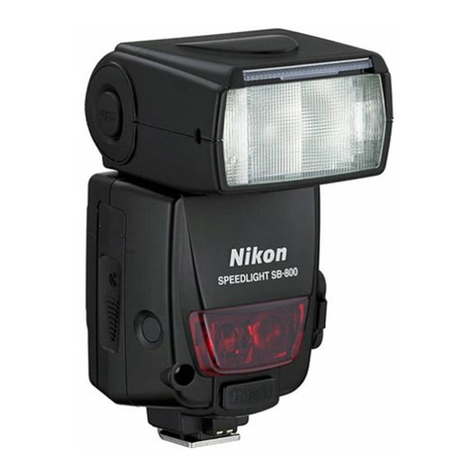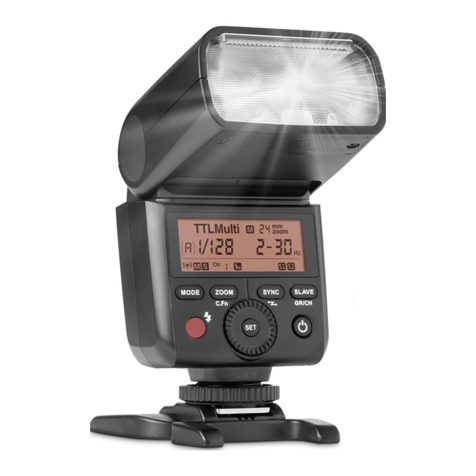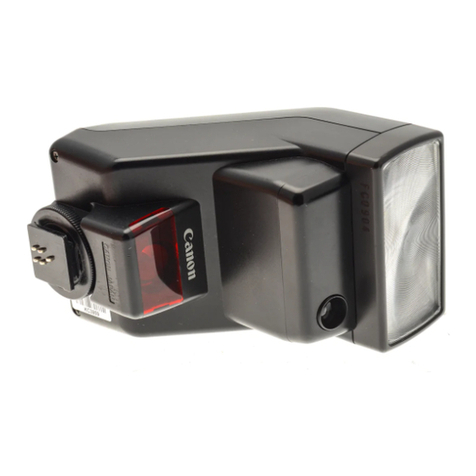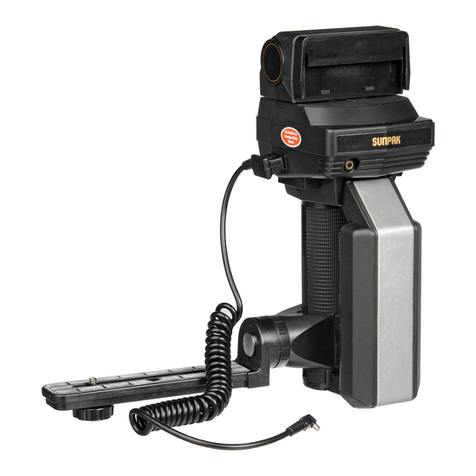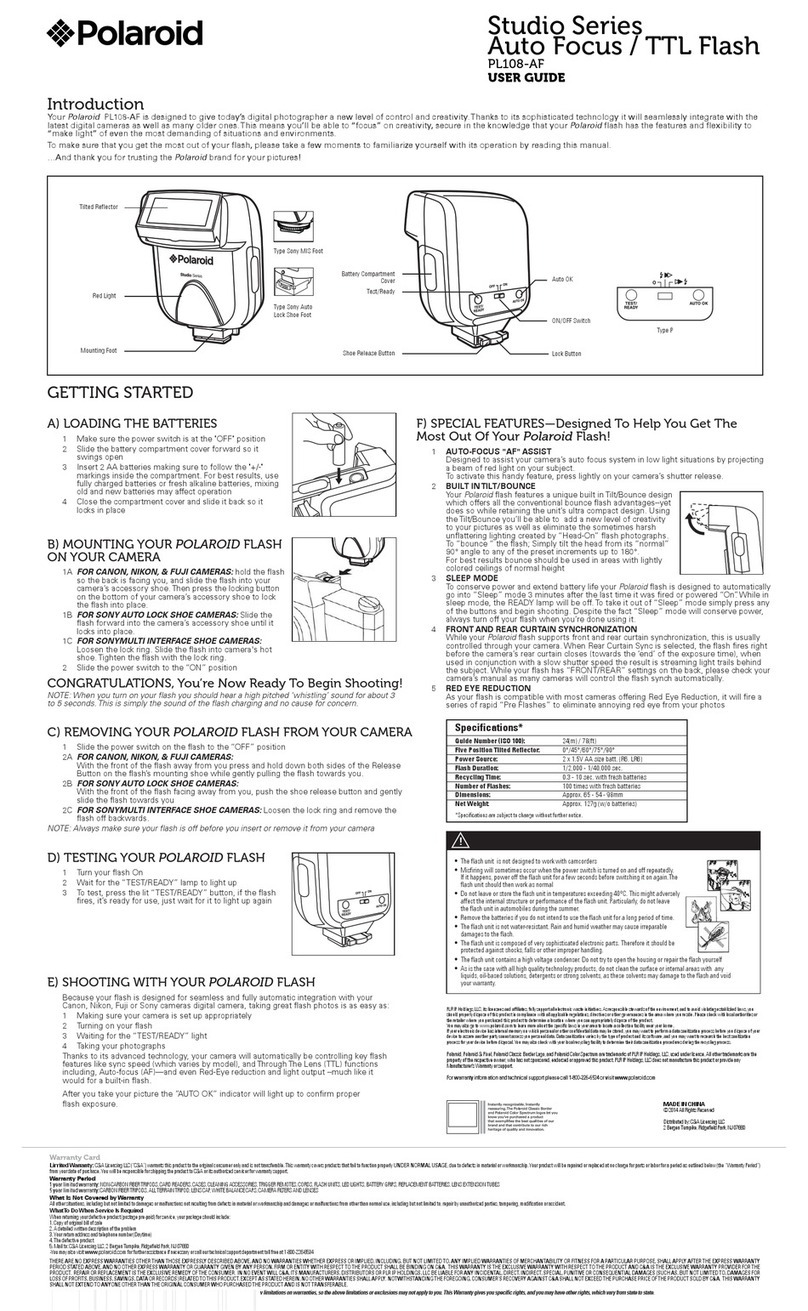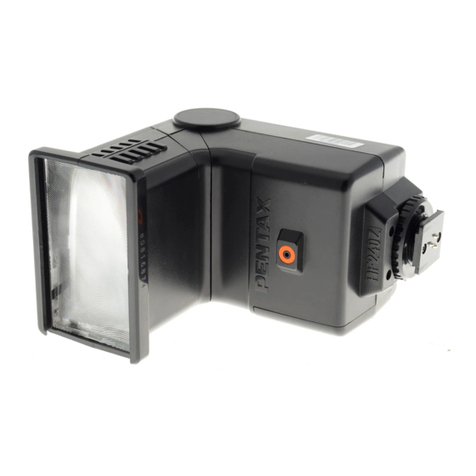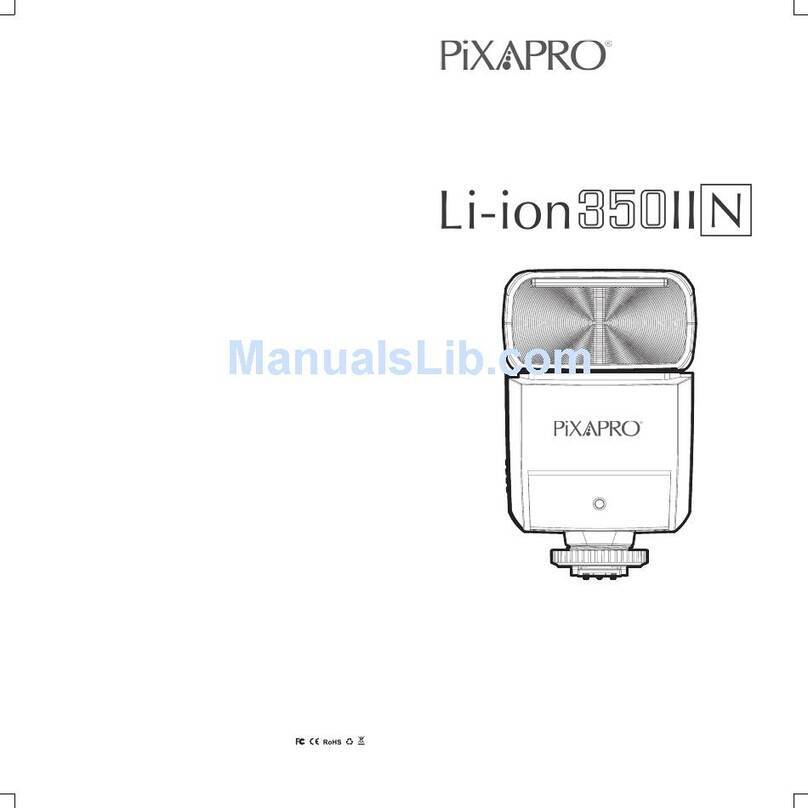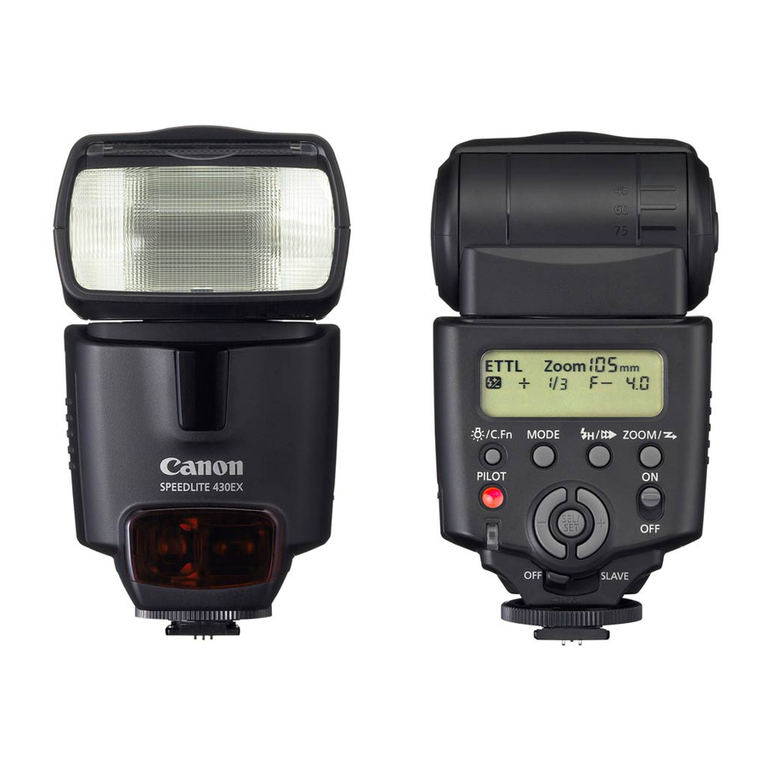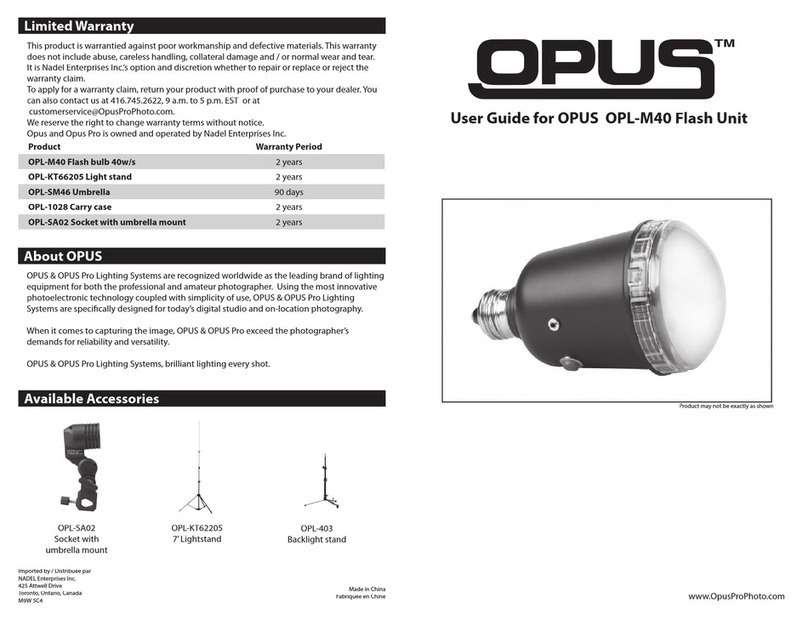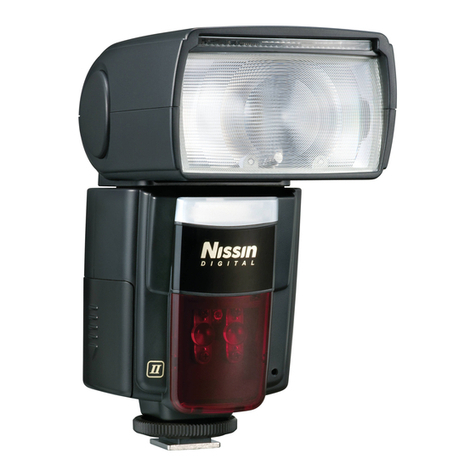FEC: Flash Exposure Compensation
With FEC function, this flash can adjust from -3 to +3 in 1/3rd stops.
It is useful in situations where minor adjusting of the TTL system is
needed based on the environment.
Setting FEC:
Set the flash exposure
2compensation amount.
● Turn the Select Dial to set
the amount.
● “0.3”means 1/3 step,
“0.7”means 2/3 step.
● To cancel the flash
exposure compensation,
set the amount to “+0”.
Press < SET > button again
3to confirm the setting.
Press Function Button 2
1< >. The icon < >
and flash exposure
compensation amount will be
highlighted on the LCD
panel.
● With high-speed sync, the faster the shutter speed, the
shorter the effective flash range.
● Multi flash mode cannot be set in high-speed sync mode.
● Over-temperature protection may be activated after 15
consecutive high-speed sync flashes.
● Try not to use high-speed sync flash, for using this
function will reduce flash tube’s service life.
Note: In the wireless remote control mode, using high-speed
sync flash with Panasonic camera may occur out of sync.
The flash output is adjustable from 1/1 full power to 1/128th power
in 1/3rd stop increments. To obtain a correct flash exposure, use a
hand-held flash meter to determine the required flash output.
Flash Mode -- M: Manual Flash
Press < MODE > button so
1that < M > is displayed.
Turn the Select Dial to choose
2a desired flash output amount.
Press < SET > button again to
3confirm the setting.
Figures displayed when reducing flash output level
Figures displayed when increasing flash output level
1/41/21/1
1/1-0.3
1/2+0.7
1/1-0.7
1/2+0.3
1/2-0.3
1/4+0.7
1/2-0.7
1/4+0.3
······
······
Flash Output Range
The following table makes it easier to see how the stop changes in
terms of f/stop when you increase or decrease the flash output. For
example, when you decrease the flash output to 1/2, 1/2-0.3, or 1/2-
0.7, and then increase the flash output to more than 1/2, 1/2+0.3,
1/2+0.7, and 1/1 will be displayed.
Optical S1 Secondary Unit Setting
In M manual flash mode, press Function Button 3 < > button
so that this flash can function as an optic S1 secondary flash with
optic sensor. With this function, the flash will fire synchronously when
the main flash fires, the same effect as that by the use of radio
triggers. This helps create multiple lighting effects.
Optical S2 Secondary Unit Setting
Press Function Button 3 < > button so that this flash can also
function as an optic S2 secondary flash with optic sensor in M
manual flash mode. This is useful when cameras have pre-flash
function. With this function, the flash will ignore a single “preflash”
from the main flash and will only fire in response to the second,
actual flash from the main unit.
● S1 and S2 optic triggering and off camera high-speed
mode are only available in M manual flash mode.
Manual Off Camera High-speed Setting (Non-Godox wireless X system)
In M manual flash mode, press Function Button 4< > button to
select high-speed mode and is displayed.
SYNC
S1/S2
S1/S2
- 37 - - 38 -
1. High-speed sync: press the <SYNC> button and is displayed
on the LCD panel. Press the OK button on OLYMPUS or
MENU button on PANASONIC camera to enter Flash Mode and
choose Fill-flash . Then, set the camera shutter.
2. Press OK button on Olympus camera or MENU button on
Panasonic camera to set second-curtain mode. And set camera
shutter after mode is displayed.
Shutter Sync Settings
2nd-C

